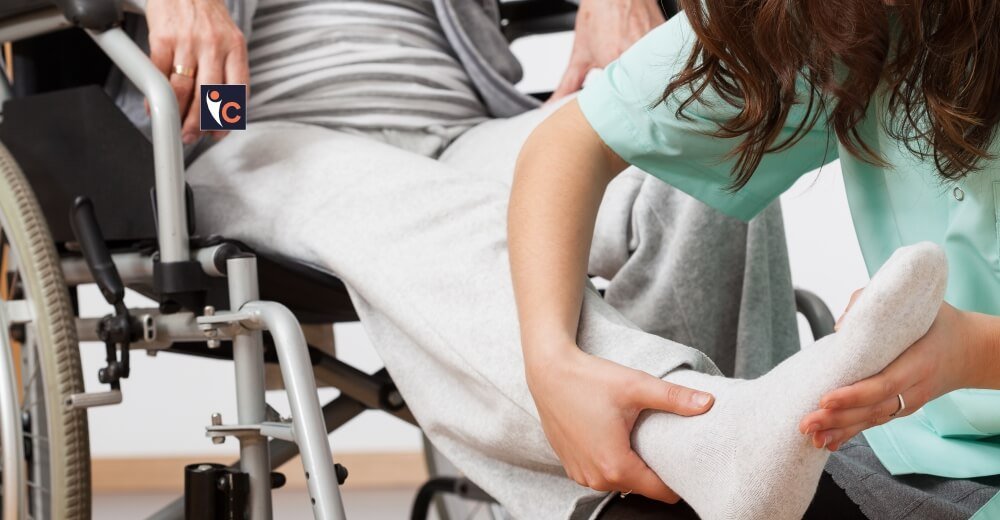India’s National Programme for Rehabilitation of Persons with Disabilities (NPRPD) has been instrumental in providing comprehensive services to individuals with disabilities. However, there is a growing recognition of the need to integrate physiotherapy into the program’s framework, unlocking its full potential to empower and support those living with disabilities.
This article delves into the pivotal role of physiotherapy in rehabilitation and explores strategies to seamlessly incorporate it into NPRPD.
The Transformative Power of Physiotherapy
Physiotherapy is a healthcare profession that focuses on the prevention, diagnosis, and treatment of disorders and injuries affecting the musculoskeletal, cardiovascular, and nervous systems. It plays a crucial role in the rehabilitation journey, helping individuals with disabilities regain functional abilities, manage pain and discomfort, and improve their overall quality of life.
In a country like India, where approximately 28.5 million people live with disabilities, the importance of physiotherapy cannot be overstated. From visual and hearing impairments to physical disabilities and mental health conditions, physiotherapy offers a comprehensive approach to rehabilitation, addressing the diverse needs of individuals with disabilities.
Challenges Hindering Progress
Despite the recognized benefits of physiotherapy, several challenges hinder its integration into NPRPD. One of the primary obstacles is the lack of trained physiotherapists in India. According to the Indian Association of Physiotherapy, the country has only 0.59 physiotherapists per 10,000 people, significantly lower than the global average of 2.5 per 10,000.
Access to physiotherapy services in rural areas is another challenge. Many clinics are concentrated in urban centres, making it difficult for individuals with disabilities living in remote areas to receive these essential services. This disparity exacerbates existing healthcare inequalities and underscores the need for a more inclusive and accessible approach to rehabilitation.
Benefits of Integration: Empowering Lives
Integrating physiotherapy into NPRPD would unlock a multitude of benefits for individuals with disabilities in India. Firstly, it would provide them with access to comprehensive rehabilitation services that address their physical, emotional, and social well-being. Physiotherapy can be tailored to individual needs, enabling individuals to regain functional abilities, manage pain, and improve their overall quality of life.
Secondly, incorporating physiotherapy into NPRPD would help reduce healthcare costs. Physiotherapy interventions are often less expensive than other forms of rehabilitation, such as surgery or medication. By providing physiotherapy services as part of NPRPD, the government can optimize resource allocation and ensure cost-effective healthcare delivery.
Thirdly, integrating physiotherapy would promote inclusive and accessible healthcare services. Physiotherapy can be adapted to meet the unique needs of individuals with various disabilities, ensuring equal access to vital rehabilitation services. This aligns with India’s commitment to promoting equal opportunities and empowering individuals with disabilities.
Strategies for Successful Integration
To successfully integrate physiotherapy into NPRPD, a multi-faceted approach is required. Firstly, the government must increase funding for physiotherapy education and training programs. This investment will expand the pool of skilled physiotherapists in India, ensuring that rehabilitation services are delivered by knowledgeable and competent professionals.
Secondly, establishing physiotherapy clinics in rural areas is crucial. By bringing these services closer to underserved communities, individuals with disabilities in remote areas can access the rehabilitation support they need, bridging the gap in healthcare accessibility.
Thirdly, developing comprehensive guidelines and protocols for physiotherapy services within NPRPD is essential. These standardized guidelines will ensure consistent and high-quality service delivery across the country, promoting uniformity and adherence to best practices in physiotherapy.
Furthermore, fostering collaboration between physiotherapists, doctors, occupational therapists, and other healthcare professionals is vital. This interdisciplinary approach will promote a holistic understanding of individual needs and facilitate the development of tailored rehabilitation plans, optimizing outcomes and maximizing the impact of physiotherapy interventions.
Raising Awareness and Advocacy
Alongside these practical strategies, raising awareness and advocacy efforts are crucial for the successful integration of physiotherapy into NPRPD. Targeted campaigns and educational initiatives can dispel misconceptions, reduce stigma, and encourage active participation in rehabilitation programs among individuals with disabilities, their families, and communities.
Engaging with local organizations, community leaders, and disability rights groups can amplify these efforts, fostering a supportive and inclusive environment that recognizes the rights and dignity of individuals with disabilities. By promoting awareness and advocating for physiotherapy’s integration, India can create a societal shift toward embracing rehabilitation services and empowering those living with disabilities.
Conclusion
Integrating physiotherapy into India’s National Programme for Rehabilitation of Persons with Disabilities represents a transformative step towards empowering individuals with disabilities and promoting their overall well-being. By addressing accessibility challenges, investing in skilled professionals, fostering interdisciplinary collaboration, and raising awareness, India can unlock the transformative potential of physiotherapy and create a more inclusive and equitable society. The journey may be challenging, but the rewards of improved quality of life, independence, and dignity for persons with disabilities make it a worthy and essential endeavour.
- Nisha Mehra
Read More: Click Here





